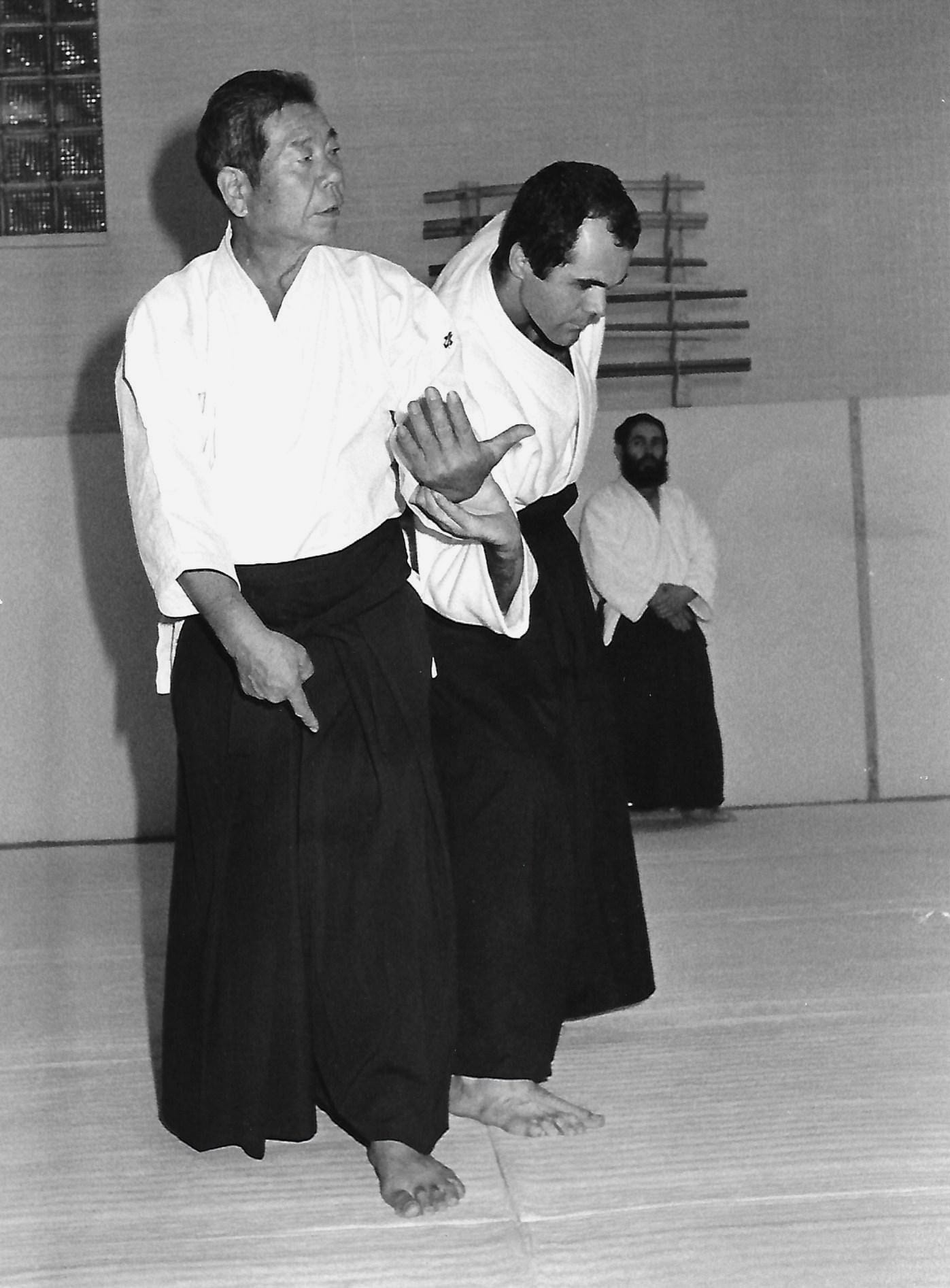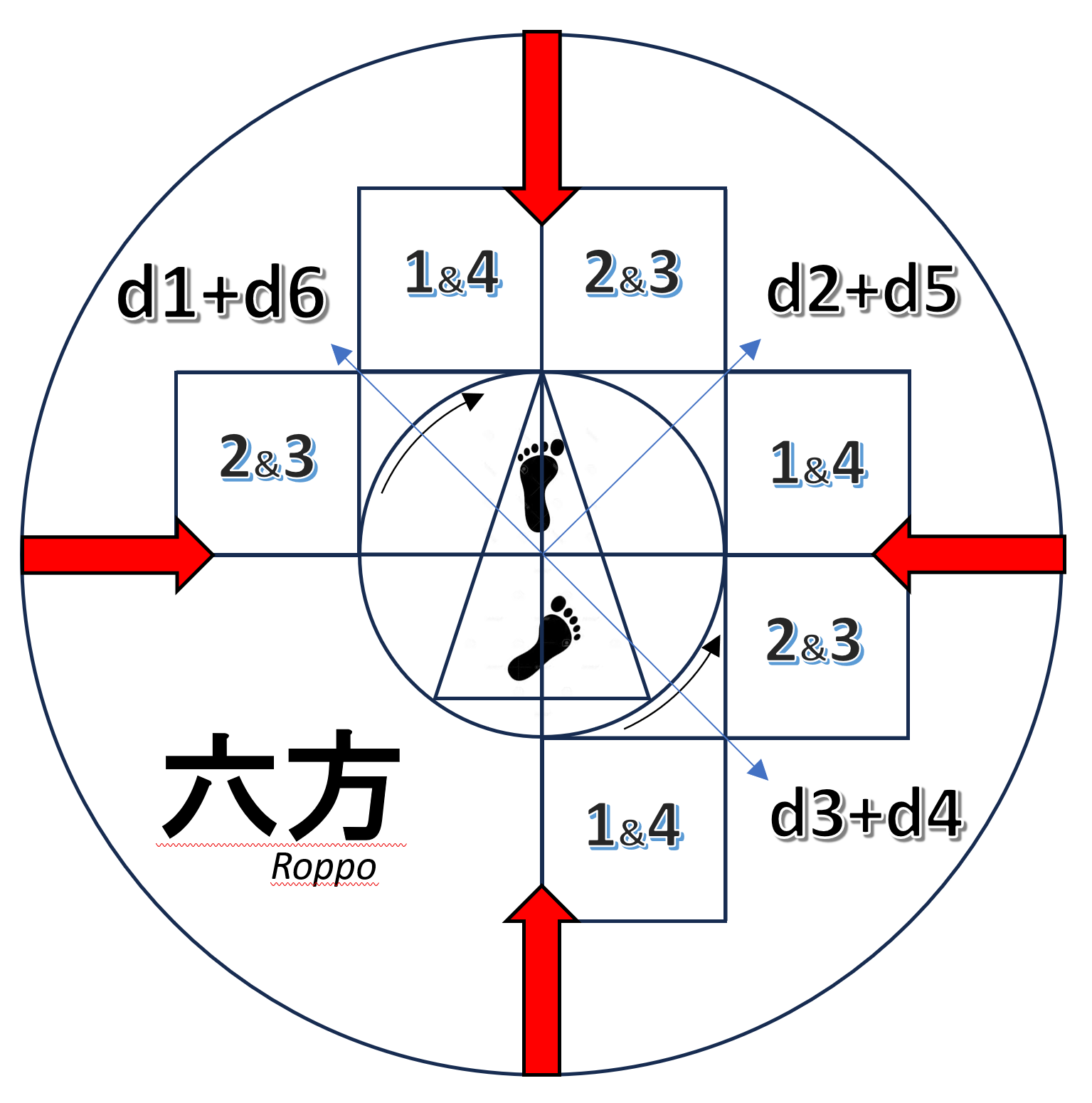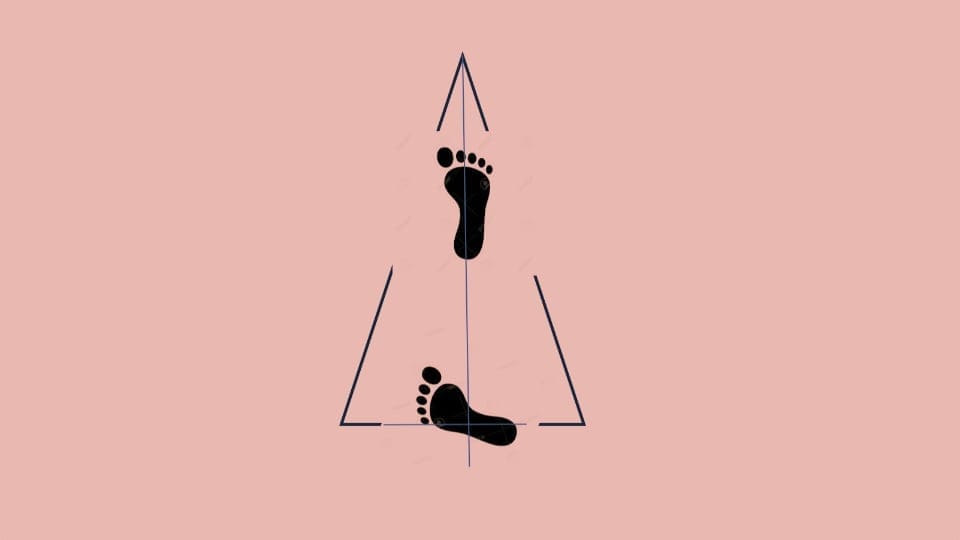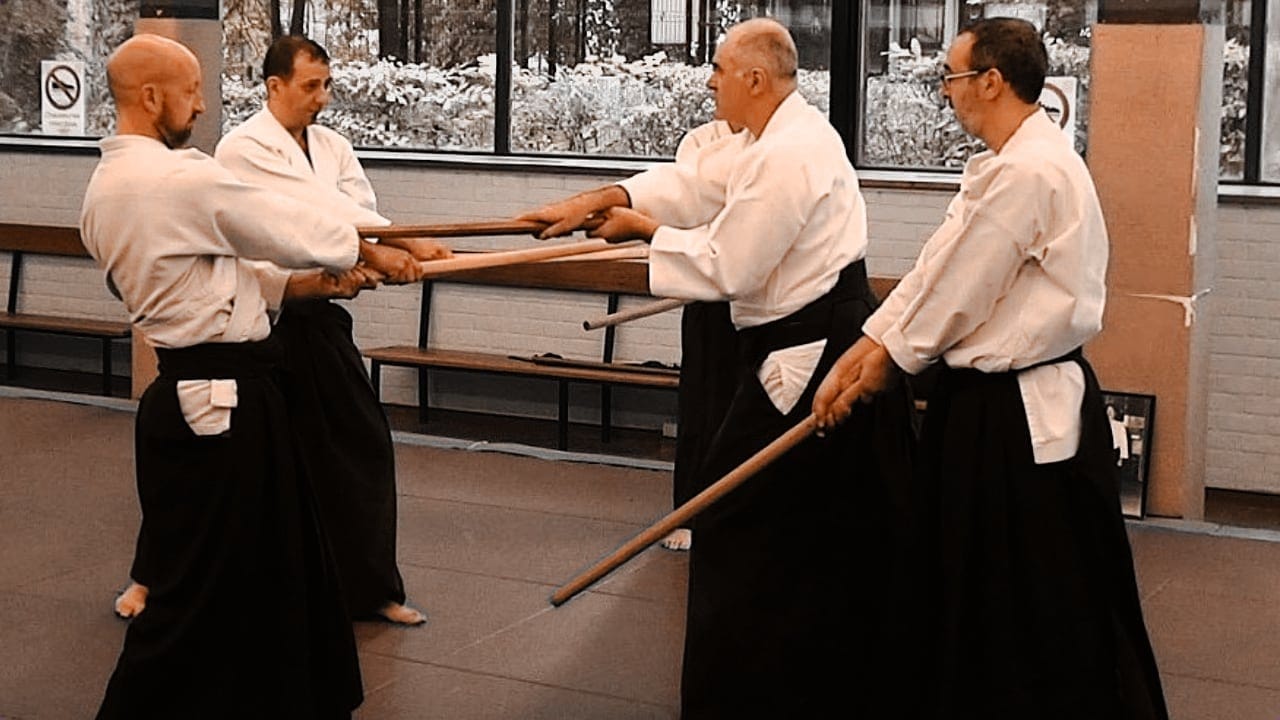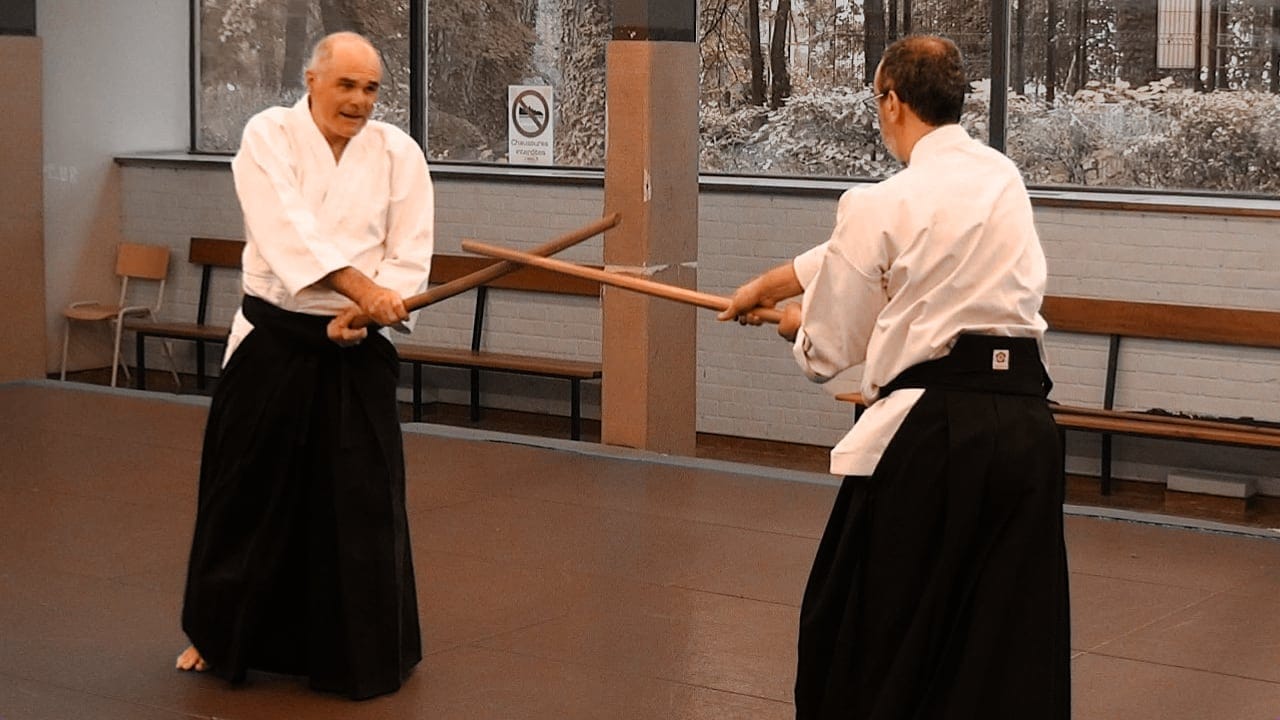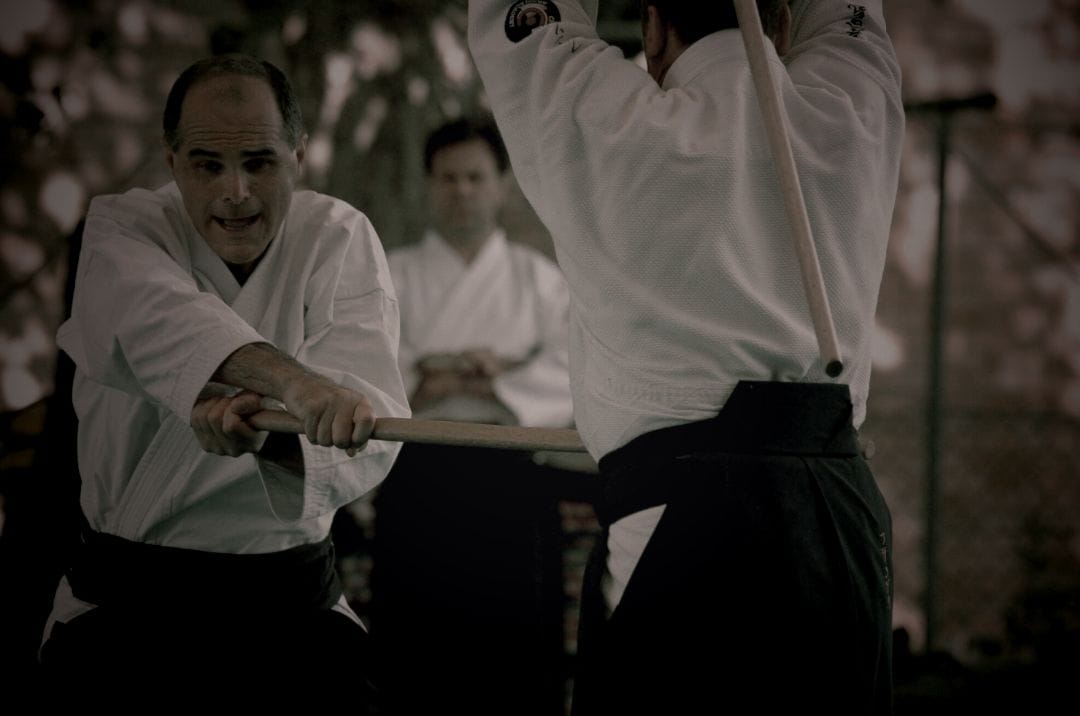In his book Budo, written in 1938, O Sensei is particularly clear on this point: any Aikido technique begins with hanmi, and any Aikido technique ends with hanmi.
It should be noted that insofar as all Aikido techniques begin with hanmi, they cannot help but end with hanmi, since the end of each Aikido technique is the starting point for the next technique. Simple logic.
It is understood that hanmi is a position (kamae). In a position, one is at rest, therefore motionless.
But what is there between two successive hanmi positions? Well, it's simple: movement. This is explained on the video:
Now, movement obviously consists of displacements, not positions.
In Aikido, displacement involves two phases: hito e mi (opening the body squarely outwards) and kenka goshi (closing the body squarely inwards). These two phases (opening and closing) are elements of the movement, not positions.
It is a serious misunderstanding to think that hito e mi and kenka goshi are positions. No Aikido movement begins with hito e mi, and no Aikido movement begins with kenka goshi, because no Aikido movement begins with the square. O Sensei clearly wanted to make it clear that the hanmi triangle is the only Aikido position; he never mentioned any position other than hanmi.
The confusion comes from the fact that, for teaching purposes, certain moments of the movement are artificially ‘frozen’ in order to show and explain the footwork. Those who receive such teaching often end up seeing a position in what is in reality only a ‘freeze frame’ (this is typically an unfortunate consequence of the Yoshinkan pedagogy of Master Gozo Shioda).
If hanmi is indeed the only position, it is because hanmi is an (isosceles) triangle, and this triangle is the only geometric figure that allows for instantaneous mobility in all six directions. The square, on the other hand, is a geometric figure of stability and power (a castle is square, a pyramid has a square base), but it does not allow for instant mobility in all six directions. Now, if you want to be strong when you strike, you need to be mobile when you have to move.
The problem is that the same position cannot be both stable and mobile: the square is stable, it is not mobile, the triangle is mobile, it is not stable (a beginner who stands in hanmi for the first time experiences this instability). A choice must therefore be made.
For its only position, Aikido has chosen the triangle, the mobility. This is of the utmost importance, because it was when O Sensei made this choice, towards the end of the 1920s, that Aikido was born, thus separating itself radically - and irreversibly - from Daito ryu, which on the contrary has historically chosen the square and the stability.
From the point of view of movement and the very concept of martial engagement, Aikido is therefore the polar opposite of Daito ryu. The current trend, which seeks to understand Aikido by studying Daito ryu, reveals a lack of understanding of their essential difference. Such an approach consists of fostering a contradiction, of using confusion as a teaching method, and of ultimately walking down a path that is the opposite of the one taken by O Sensei; in truth, it amounts to not trusting the Founder.

